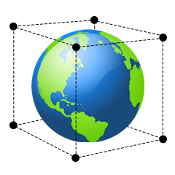Since 2000, the Web has split into four areas, or arenas. Each has its own rules, its own promoters, its own companies and its own clients :
• The military web
It incorporates the four types of weapons (military, aviation, marine and space) from the model Point, Click and Fire developed during the invasion of Iraq (see the robots below). It focuses on decision-making from schematic maps and espionage reports from the information collected by drones. It is funded by grants awarded by the State and the military industrial complex.
Below, a War Room :
• The commercial web
It integrates the business and residential markets (B2B, B2C and C2C). It focuses on near-zero inventories, varying prices dependent on time, the integration of products online and offline and reduced profit margins (but multiplied because of huge quantities). It is financed by the sale of products and advertising (see the possible emergence of dynamic pricing).
• The academic, or educational, web
It brings together scientific researchers and teachers of the same discipline working in different institutions. It focuses on publishing scientific journals and offering educational content to academia. It is subsidized by universities, the Ministry of Education, R & D contracts and the more pressing needs of an industrial workforce which must become increasingly knowledgeable.
Below a classroom at the primary level in South Korea :
• The social web
It brings together all the various actors of civil society. It focuses on bottom-up participation techniques (ascendant strategy). It is oriented towards the taming of local governance (chapter 7, no. 7) while its economy is based on bartering content and community services :
Below an Internet Café in Canada :
These four distinct Webs obey very different rules :

Further analysis reveals the mechanisms at work behind this segmentation, mechanisms that are the foundation of the emergent knowledge-based society :

An invisible web
Since 2003, a Deep Web (also called darknet) was developed in the United States ; it contains un-indexed content where anonymity is required, includes military communications, corporate intranets, government activities of spying, police records, etc. It is also home to many illegal activities such as drug markets, counterfeit money, false passports, pornography, etc. (See Silk Road, Tor, etc.)
Users of the invisible Web (Tor)
Since 2000, the Web has split into four areas, or arenas. Each has its own rules, its own promoters, its own companies and its own clients :
• The military web
It incorporates the four types of weapons (military, aviation, marine and space) from the model Point, Click and Fire developed during the invasion of Iraq (see the robots below). It focuses on decision-making from schematic maps and espionage reports from the information collected by drones. It is funded by grants awarded by the State and the military industrial complex.
Below, a War Room :
• The commercial web
It integrates the business and residential markets (B2B, B2C and C2C). It focuses on near-zero inventories, varying prices dependent on time, the integration of products online and offline and reduced profit margins (but multiplied because of huge quantities). It is financed by the sale of products and advertising (see the possible emergence of dynamic pricing).
• The academic, or educational, web
It brings together scientific researchers and teachers of the same discipline working in different institutions. It focuses on publishing scientific journals and offering educational content to academia. It is subsidized by universities, the Ministry of Education, R & D contracts and the more pressing needs of an industrial workforce which must become increasingly knowledgeable.
Below a classroom at the primary level in South Korea :
• The social web
It brings together all the various actors of civil society. It focuses on bottom-up participation techniques (ascendant strategy). It is oriented towards the taming of local governance (chapter 7, no. 7) while its economy is based on bartering content and community services :
Below an Internet Café in Canada :
These four distinct Webs obey very different rules :

Further analysis reveals the mechanisms at work behind this segmentation, mechanisms that are the foundation of the emergent knowledge-based society :

An invisible web
Since 2003, a Deep Web (also called darknet) was developed in the United States ; it contains un-indexed content where anonymity is required, includes military communications, corporate intranets, government activities of spying, police records, etc. It is also home to many illegal activities such as drug markets, counterfeit money, false passports, pornography, etc. (See Silk Road, Tor, etc.)
Users of the invisible Web (Tor)





Leave A Comment